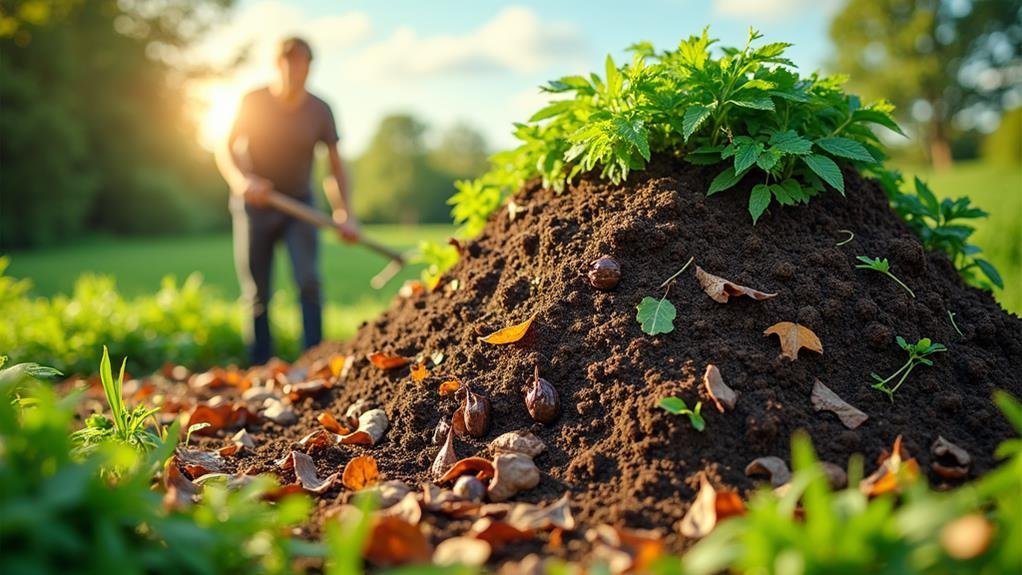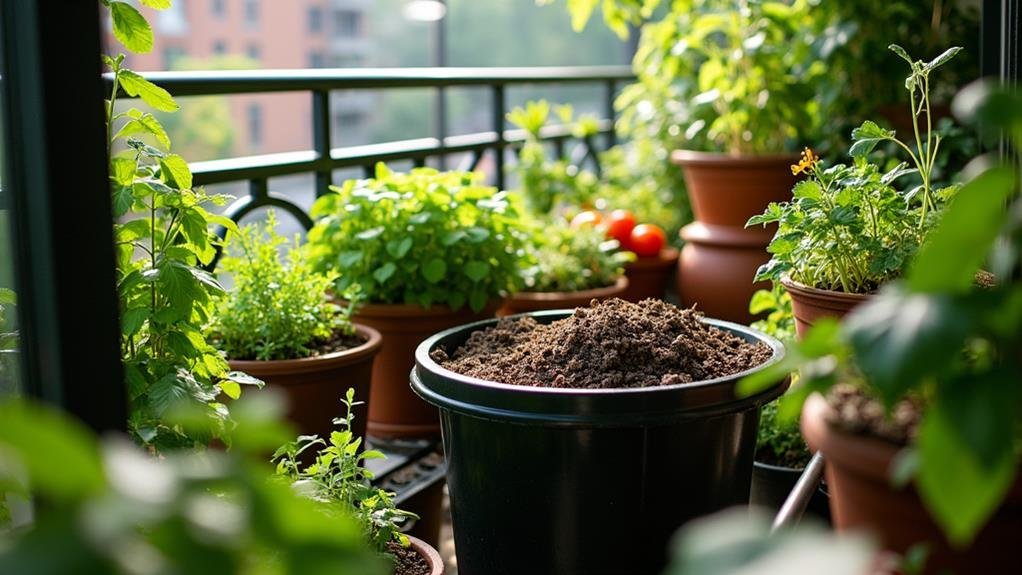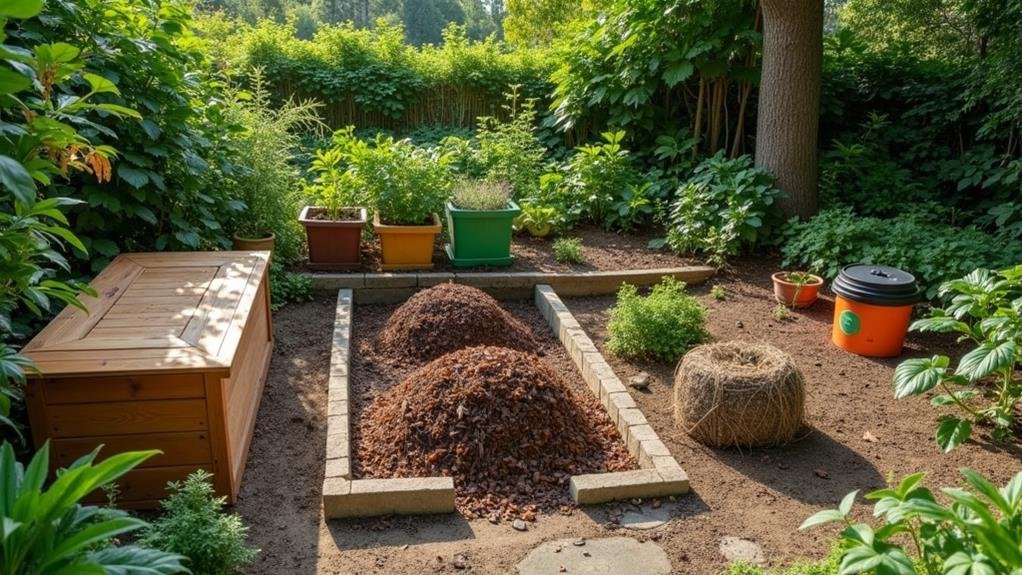In terms of compost pile maintenance, you might be surprised by how a few simple practices can greatly improve efficiency. First, consider where you place your pile; it's more important than you think. Then, you'll want to strike the right balance between nitrogen-rich greens and carbon-rich browns. Don't forget about moisture levels and the frequency of turning the pile, as these factors play an essential role in decomposition. Finally, monitoring temperature and odor can prevent issues before they arise. Curious about the details behind these tips? If so, be sure to research small space composting tips that are specifically tailored to your situation. Additionally, consider investing in a compost thermometer to accurately gauge the temperature of your pile. Proper aeration is also crucial for successful decomposition, so consider using a pitchfork or compost aerator to turn your pile regularly. Following these simple practices will ensure that your compost pile stays healthy and efficient, no matter the size of your space.
Choose the Right Location
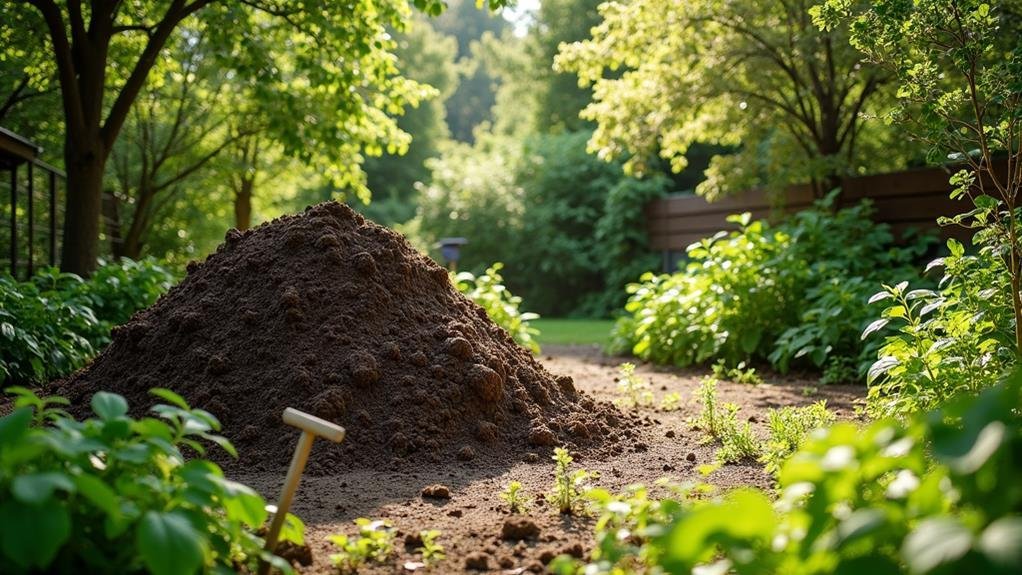
Choosing the right location for your compost pile is imperative for its success. Start by finding a spot that's easily accessible, as you'll want to add materials regularly and check its progress.
Ideally, choose a sunny area, because warmth helps speed up decomposition. A shaded location might slow things down, so keep that in mind.
Make certain the ground is level, so your pile doesn't shift or wash away during rain. It's also essential to avoid placing it too close to trees or shrubs, as their roots can compete for nutrients and water.
Additionally, you'll want to keep it away from your house to prevent any unpleasant odors from wafting indoors.
Good air circulation is important, so consider an open area where air can flow freely. If you have pets, make certain the pile is secure and out of their reach.
Balance Greens and Browns
To create a healthy compost pile, it's vital to balance greens and browns. Greens are your nitrogen-rich materials, like kitchen scraps, grass clippings, and fresh plant trimmings. They help your compost break down quickly, but too many greens can lead to a smelly, slimy mess.
On the other hand, browns are carbon-rich materials, such as dried leaves, straw, and cardboard. These provide structure to your pile and improve aeration.
Aim for a ratio of about three parts browns to one part greens. This balance creates an environment where beneficial microorganisms can thrive, speeding up decomposition.
When you add materials, chop them into smaller pieces; this increases the surface area and helps speed up the composting process. If you notice your pile is too wet or has a foul odor, it might be time to add more browns.
Mixing the materials well is important, too. Turn your pile regularly to aerate it, which helps maintain that magical balance.
Remember, achieving the right mix takes a little practice, but once you get the hang of it, you'll be well on your way to creating nutrient-rich compost.
Happy composting!
Maintain Proper Moisture Levels
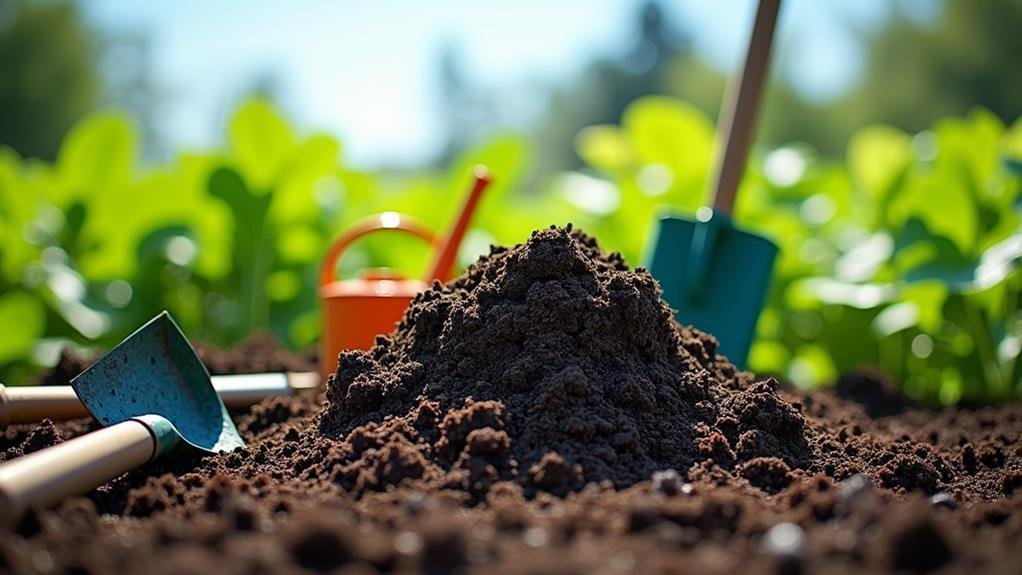
A well-maintained compost pile resembles a moist sponge—not too dry, but not waterlogged either. To achieve this balance, you need to monitor your pile's moisture levels regularly. If it's too dry, the decomposition process slows down, and you might end up with an unsightly, crumbly mess.
On the flip side, excessive moisture can create anaerobic conditions, leading to unpleasant odors and slow breakdown.
To keep things just right, you should add water during dry spells. A gentle sprinkle will do the trick—think of it as giving your compost a drink. Aim for a moisture level of about 40-60%. You can check moisture by grabbing a handful of compost; it should feel damp but not dripping wet.
You'll also want to cover your pile if it's exposed to heavy rain, as this can saturate it too much. Using a tarp or a lid can help manage moisture levels effectively.
Turn the Pile Regularly
Regularly turning your compost pile is vital for maintaining a healthy decomposition process. When you mix the materials, you guarantee that air circulates throughout the pile, which is essential for aerobic bacteria to thrive. These bacteria break down organic matter efficiently, so your compost develops faster.
Aim to turn your pile every few weeks, or whenever you notice that the materials are compacted or starting to smell musty.
To turn your pile, use a pitchfork or shovel to move the outer layers to the center and vice versa. This action helps distribute moisture, temperature, and nutrients evenly. If you're feeling ambitious, consider using a compost tumbler for an easier rotation. Just give it a spin, and voilà!
Keep an eye on the size of your pile. If it shrinks considerably, it's a sign that decomposition is happening, but you may want to add more materials to keep it active.
Monitor Temperature and Odor
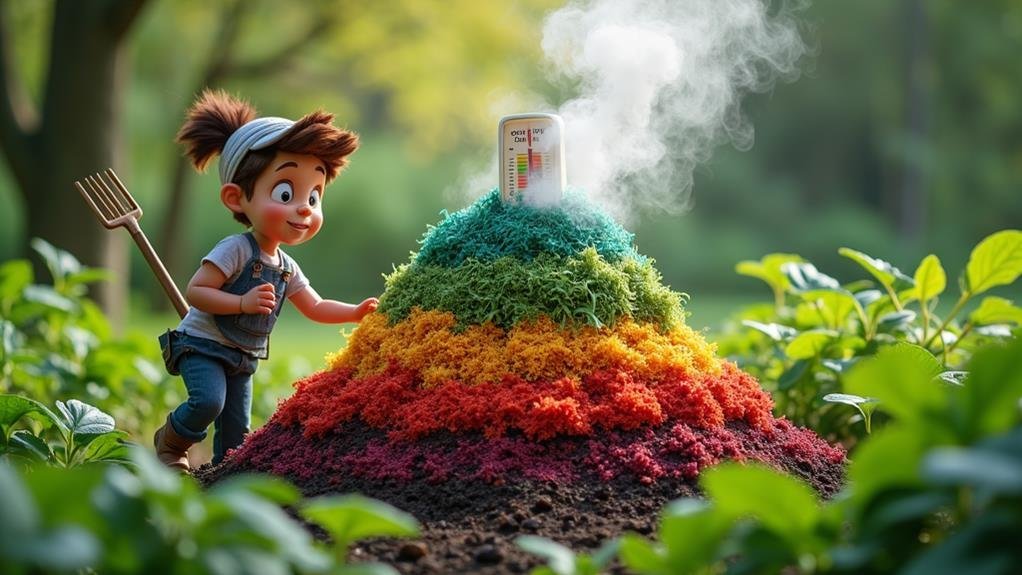
Keeping an eye on the temperature and odor of your compost pile is essential for guaranteeing it's breaking down properly.
A well-maintained compost pile should heat up to between 130°F and 160°F (54°C to 71°C) during the decomposition process. You can use a compost thermometer to check the internal temperature. If it's too low, it might need more nitrogen-rich materials, like grass clippings or kitchen scraps.
On the other hand, if your pile's temperature spikes too high, it may be time to turn it again to aerate and cool it down.
Odor is another key indicator of your compost's health. A fresh, earthy smell means your compost is likely in good shape.
If you notice a foul, rotten odor, it's a sign that anaerobic bacteria are taking over. To fix this, try adding more carbon-rich materials like dry leaves or shredded paper, and guarantee the pile is well-aerated.
Conclusion
By following these five tips, you'll guarantee your compost pile thrives and produces nutrient-rich soil. Choosing the right location, balancing greens and browns, maintaining moisture, turning the pile regularly, and monitoring temperature and odor are all key steps. With a little attention and care, you can transform kitchen scraps and yard waste into valuable compost. So, roll up your sleeves and get started—your garden will thank you for it! Happy composting!

